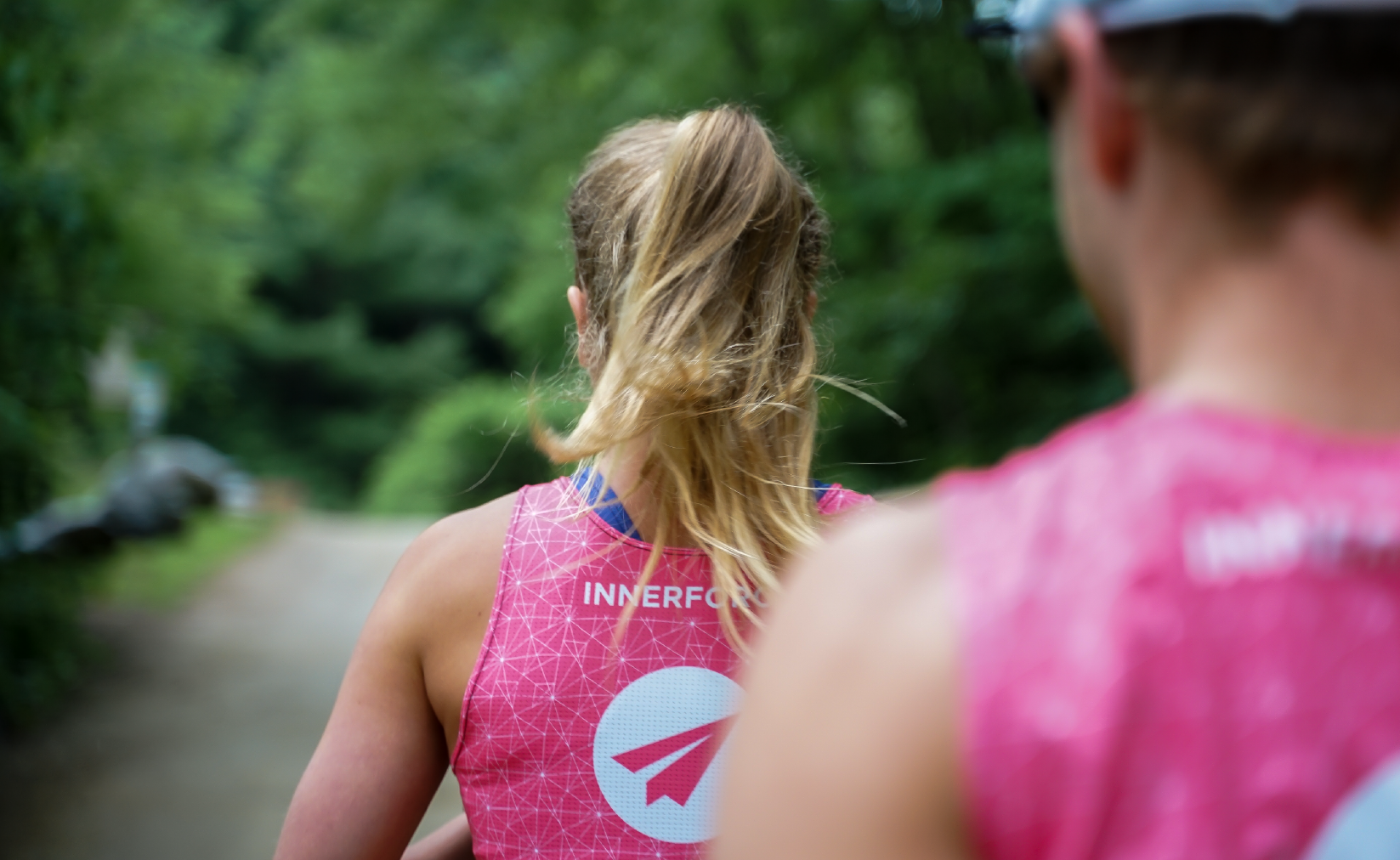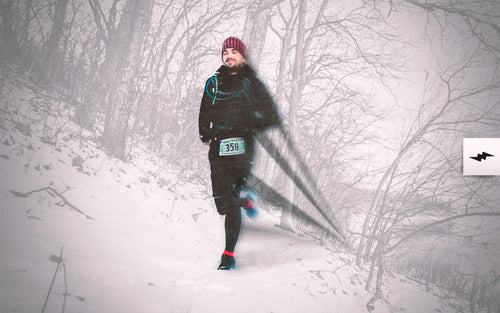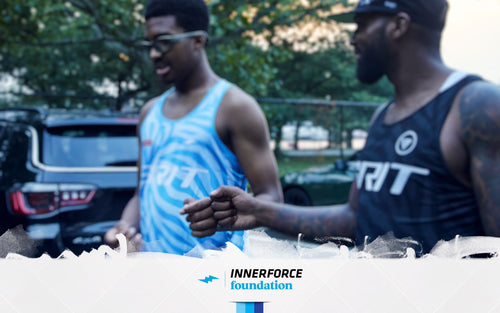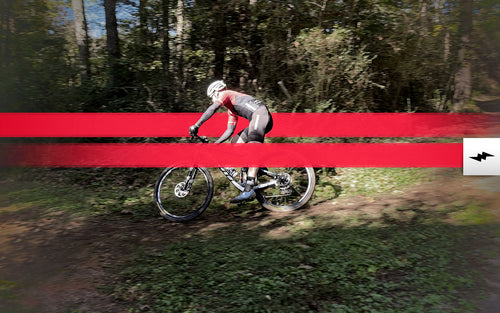How to Improve Your Running Technique

Whatever your ability or experience, it's always important to monitor your running technique in order to continue improving your athletic performance.
For many people, running technique does not get the same level of focus as swimming or cycling when training for a triathlon - after all, we all learned how to run as kids, right? But like cycling or swimming techniques, endurance running required for triathlons and other races has its own technique that needs practice.
IMPROVING YOUR RUNNING TECHNIQUE AND AVOID COMMON MISTAKES
Running is an aggressive discipline and is stressful on the body, especially the knees. If you do not have the right technique, you are increasing the risk of injuries and affecting your race performance. Therefore, it is about running smarter, not more.
Running with the right technique will help prevent injuries, be faster and to save energy.
Foot strike

The debate about which is the better foot strike is ongoing. Many analyses from biomechanics experts have determined that of the three foot strike in runners (heel strike, midfoot strike and forefoot strike) the one that produces the minimum impact is the midfoot strike, followed by the forefoot strike, and then the most aggressive: the heel strike.
Heel strike is too aggressive on our body because our heels have to support two or three times our weight. It also reduces our speed because the contact of the heel with the ground acts as a brake. Despite its disadvantages, heel strike is the most common mistake runners make, because when we try to run faster and do larger steps, we ignore that what we have to do is increase the frequency.
This runner explains well why the heel strike is bad:
Wrong arm positions
Many people do not know what to do with their arms, often keeping them too close or too far from the body. The right position is keeping the hands at waist level, with the arms at a 90-degree angle at the elbows at the side of the body. Shoulders have to be low and relaxed and the rhythm follows the natural back and forth balance.
Body position
While running, your hips have to be high, the body has to be in a straight position with the head high and eyes looking forward.
THREE BEGINNER RUNNER MISTAKES
1. Wearing the wrong clothes
Some people think that clothing is a trivial topic, but this couldn't be further from the truth.
Clothing for runners is specialized. Some runners wear too much or too little clothing for certain weather conditions, and this can affect body temperature and in turn cause discomfort or illness.
Runners should wear technical fabrics such as DryFit, Thinsulate, Thermax, CoolMax, polypropolene, or silk.
You can't go wrong with Innerforce, of course! We create custom pro gear for athletes of all levels, using only the finest quality!
Wearing the wrong running shoes is also common, and can lead to running injuries. Go to a specialized store and they will help you get the right shoes.
2. Dehydration
Many beginner runners do not drink enough water and underestimate how many fluids they lose in running, which can lead to things like side stitches and dehydration. Pay attention to how much water you are drinking not only during training but before and after as well.
3. Overtraining
Some runners undertake hard training routines: they run every day and run many miles, but they ignore that rest and recovery is just as important as training. If you do not rest enough it will affect your performance.
Our final piece of advice is to do a video analysis session with your mates and a coach and you will learn how to improve your running technique by watching back yours, and your mate's performance.

Whatever your ability or experience, it's always important to monitor your running technique in order to continue improving your athletic performance.
For many people, running technique does not get the same level of focus as swimming or cycling when training for a triathlon - after all, we all learned how to run as kids, right? But like cycling or swimming techniques, endurance running required for triathlons and other races has its own technique that needs practice.
IMPROVING YOUR RUNNING TECHNIQUE AND AVOID COMMON MISTAKES
Running is an aggressive discipline and is stressful on the body, especially the knees. If you do not have the right technique, you are increasing the risk of injuries and affecting your race performance. Therefore, it is about running smarter, not more.
Running with the right technique will help prevent injuries, be faster and to save energy.
Foot strike

The debate about which is the better foot strike is ongoing. Many analyses from biomechanics experts have determined that of the three foot strike in runners (heel strike, midfoot strike and forefoot strike) the one that produces the minimum impact is the midfoot strike, followed by the forefoot strike, and then the most aggressive: the heel strike.
Heel strike is too aggressive on our body because our heels have to support two or three times our weight. It also reduces our speed because the contact of the heel with the ground acts as a brake. Despite its disadvantages, heel strike is the most common mistake runners make, because when we try to run faster and do larger steps, we ignore that what we have to do is increase the frequency.
This runner explains well why the heel strike is bad:
Wrong arm positions
Many people do not know what to do with their arms, often keeping them too close or too far from the body. The right position is keeping the hands at waist level, with the arms at a 90-degree angle at the elbows at the side of the body. Shoulders have to be low and relaxed and the rhythm follows the natural back and forth balance.
Body position
While running, your hips have to be high, the body has to be in a straight position with the head high and eyes looking forward.
THREE BEGINNER RUNNER MISTAKES
1. Wearing the wrong clothes
Some people think that clothing is a trivial topic, but this couldn't be further from the truth.
Clothing for runners is specialized. Some runners wear too much or too little clothing for certain weather conditions, and this can affect body temperature and in turn cause discomfort or illness.
Runners should wear technical fabrics such as DryFit, Thinsulate, Thermax, CoolMax, polypropolene, or silk.
You can't go wrong with Innerforce, of course! We create custom pro gear for athletes of all levels, using only the finest quality!
Wearing the wrong running shoes is also common, and can lead to running injuries. Go to a specialized store and they will help you get the right shoes.
2. Dehydration
Many beginner runners do not drink enough water and underestimate how many fluids they lose in running, which can lead to things like side stitches and dehydration. Pay attention to how much water you are drinking not only during training but before and after as well.
3. Overtraining
Some runners undertake hard training routines: they run every day and run many miles, but they ignore that rest and recovery is just as important as training. If you do not rest enough it will affect your performance.
Our final piece of advice is to do a video analysis session with your mates and a coach and you will learn how to improve your running technique by watching back yours, and your mate's performance.
SEE WHAT CUSTOM APPAREL LOOKS LIKE

GEAR UP
MORE FROM THE BLOG

Is Trail Running Good For Triathletes?
Triathlon training can become quite obsessive. There are so many apps available for measuring your bike sessions, your runs and...

The Innerforce Foundation
If there are any takeaways from 2021 it is that we can't control what we can't control but there's plenty...

Why Do My Bike Tires Keep Going Flat?
Walking home in the pouring rain, dressed in glaringly-visible Lycra, pushing your road bike along next to you with a...

Managing Swimmer’s Shoulder
Injuries suck. This we probably all know by now, and if you have not experienced this yet then it is...




